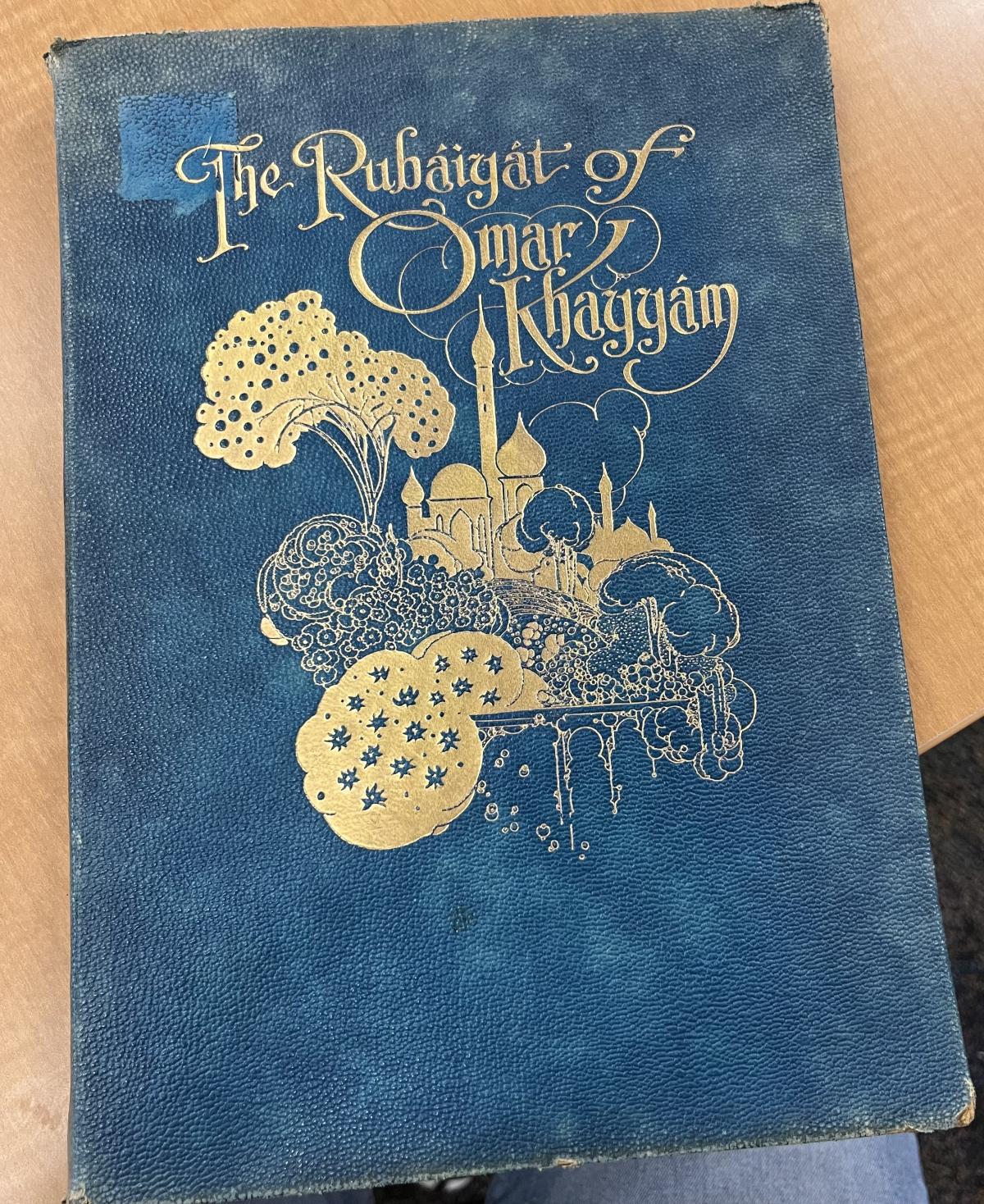This edition of the Rubáiyát of Omar Khayyám was created in 1929, and published by London and Glasgow Collins, Clear-Type Press. It was given as a gift in 1930 to someone; there is a note on the first page after the cover, “Merry Christmas 1920. From Will” [see image 2]. The cover is dark blue, made of leather, it has been frayed and the color is not consistent on the cover, some places appear truer to the original color and other places have become almost white [see image 1]. The spine of the book is very discolored, with more yellow than blue that covers the front/back. There is also a frayed tan bookmark that seems to once be attached to the book but is not anymore since it is unattached to the book itself and laying in between the pages. It does not give direct credit of authorship to anyone but does give Edward FitzGerald credit for the translation of the piece [see image 4].
This is the first edition of FitzGerald's translations of this poem. However, despite all the words being exactly the same as in the first edition, the form of the stanzas is not the same. For instance, they include different enjambments or remove original enjambments that the first edition has. This does not appear to be a problem of not having the space to do so, which begs the question of why that is different in this edition. Because of the different form these lines take, the poem in this edition could have a different tone and emphasis than the original first edition does. In this edition, there is an introduction by famous playwright Laurence Housman (his most famous work was Victoria Regina). Famous British illustrator Charles Robinson (however interestingly enough, it does not appear credited to him online). He grew up in a family of artists and went to secondary school for art. Charles illustrated many children’s books and fairy tale books. He even wrote his own book containing children’s poetry and illustrations. He added color plates and decorations throughout the fifty-six pages of this edition.
There are only four total illustrations [see images 3/7], in color, surrounding the story of the same man. Unlike many other editions of the Rubáiyát, there is no depiction of wine or drink in the borders or in the illustrations. Given that it was created during the prohibition, this might be the reason. These illustrations are separate pieces of paper attached to the page in the book itself. The first illustration appears in the beginning right before the title page [see image 3]. Throughout the poem, there are three different breaks on quatrain XX, XXVI, and XLII. With these breaks, the material of the paper changes, it is thicker and a more grayish white than the white the other pages are. It has the stanza on another page, in a different font and smaller, appearing to be engraved in the paper, and has an illustration on the other page that does not include the stanza. It is also different because it does not include the boarding illustrations that are on every other page with words [see images 5/6] There are decorations and borders in orange on almost every page, each one is exactly the same. The borders seem to be arabesques, which are widely popular in Islamic culture. The beginning of the poem displays a decoration of the top of a tower or some kind of art in a blue that matches the color that the text is displayed in, and this same illustration of the tower appears at the very end after the “Biographical Note” concerning both Omar Khayyám and Edward FitzGerald.








